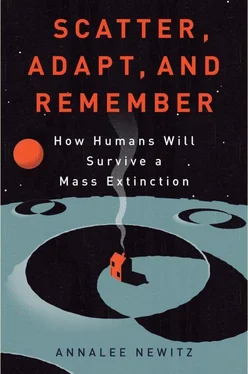Pakrasi imagines a future where biologists could even develop specific strains of cyano to transform all aspects of industrial production. The bacteria could eventually replace petroleum, and aid in the production of chemicals like polypropylene, which is used in the synthesis of everything from rope and lab equipment to thermal underwear and durable plastic-food containers. Famed scientist and U.S. secretary of energy Steven Chu has talked about replacing the oil economy with a biofuel “glucose economy.” But Pakrasi and his colleagues in I-CARES have refined this notion even further, and speculate about a global algae economy whose engines run on photosynthesis.
Pakrasi, who studied physics in India before coming to the States for his Ph.D. in biology, says he often looks to India and China for inspiration when he thinks about how to implement the discoveries he’s making in the lab. “It’s hard to [test new energy systems] here or in Europe because these countries have stable infrastructures that are already built. We’re always trying to catch up, to retrofit,” he mused. “But in China or India, it seems like every millisecond they are setting up new structures. These are the places where the technology we’re developing here can be applied directly.” Under Pakrasi’s guidance, I-CARES has developed strong relationships with universities in India and China, and researchers in St. Louis collaborate with colleagues across the world. They’re even reaching out beyond the sciences, to bring in experts in ethics and sociology. “As scientists, we’re good at coming up with technical solutions,” Pakrasi said, “but as far as the policy and human angles, we have to collaborate with [other branches of the university too.]”
I-CARES is the kind of institution that we’ll be seeing more often at universities and in industry, combining people from many disciplines to come up with global solutions to problems that straddle the line between science and society. Already, the U.S. Department of Energy has funded a massive effort in California, the Joint Center for Artificial Photosynthesis, whose aims are similar to I-CARES. Its team of over a hundred scientists, many based at Caltech and the Lawrence Berkeley National Laboratory, aims to develop a way to extract clean energy from sunlight, water, and carbon, just the way plants do.
This futuristic collaborative research could one day save the world. And it grew out of the simple cyanobacteria and its best lesson, which is to adapt and diversify by taking advantage of a sustainable form of energy. In the next chapter, we’ll learn about another life-form with an extraordinary survival mechanism—one that may have helped bring it back from the brink of extinction. You might say that this animal, the gray whale, lives by memory alone.
GRAY WHALES JUST look like survivors. Their slate-colored skin is crusted with barnacles, and their huge, scarred jaws curve downward in what seem to be permanent grimaces. Bottom-feeders who mostly eat tiny crustaceans, these creatures nevertheless have a reputation as formidable fighters. Only packs of orcas and humans usually dare to hunt them, and accounts going back several centuries describe the deadly wrath of grays pursued by whalers. In 1874, the whaler and naturalist Charles Melville Scammon wrote about his experiences hunting grays. He recalled, “Hardly a day passes but there is upsetting or staving of boats, the crews receiving bruises, cuts, and, in many instances, having limbs broken; and repeated accidents have happened in which men have been instantly killed, or received mortal injury.” Grays, he explained, possessed “unusual sagacity,” which made them a hard target—especially when the animals’ intelligence was coupled with their 35-to-50-foot lengths, 80,000-pound bodies, and “quick and deviating movements.”
Despite their ferocity, grays have one vulnerability. Every winter, they migrate thousands of kilometers from the safety of their Arctic Ocean feeding grounds to a series of warm lagoons in Baja California, Mexico. One of the most popular spots is nicknamed Scammon’s Lagoon, after the whaler. Theirs is close to the longest migration taken by any animal on the planet, and the whales will encounter many predators and treacherous conditions along the way. Then, after a winter spent having children (and making them) in the lagoons, they begin the trip back up the coast again, often tailed by their young. Though both the Arctic Ocean and Mexican lagoons are relatively sheltered from predators by natural barriers, the long migrations in between leave the whales exposed to danger for months at a time. How do they manage?

The gray whale travels on one of the longest migrations of any animal in the world. (illustration credit ill.9)
Grays have evolved a number of features that seem to protect them during their migrations. Remarkably, the whales never stop swimming during these journeys. Their brains “sleep” by shutting down only one hemisphere at a time, so one part of the gray’s brain is always awake to keep it moving in the right direction. Even more unbelievably, grays rarely pause to feed during their migration. Instead they live on stored energy. They’ve spent the entire summer grazing on the Arctic seafloor, building up a thick layer of energy-storing blubber which they burn through during the roughly seven-month round-trip to Mexico. Grays eat by taking giant bites of dirt and sifting tasty crustaceans out through the baleen filters in their mouths. This is why they’re often seen with big, muddy smears on their lips after they eat. Marine biologists often jokingly call them the cows of the sea. Grays spend half the year eating so that they can spend the other half migrating and reproducing.
It’s likely that grays have been living this way for the many millennia since they first evolved 2.5 million years ago. Grays are also slightly less complex than some other cetaceans, which has led some biologists to speculate that they are a more ancient species. They don’t “sing” by creating complex harmonies like humpback whales do. They emit what scientists call moaning noises that can be heard only at close range—unlike humpback songs, which can be heard for kilometers underwater. Though grays are able learners, as Scammon observed over a century ago, they don’t exhibit a lot of social behavior like their cetacean cousins the dolphins. Instead of swimming in pods, they prefer to migrate in loose, ever-changing groups of two or three. Many travel alone. Still, grays have maintained what could be called a tradition, their great migration, that gets passed from one generation to the next. This isn’t a matter of mere instinct. Scientists believe it’s something that each new generation of juveniles must learn from the adults, like passing along a map that is vital to the survival of the species. It’s therefore no exaggeration to say that grays survive by relying on their memories. Without memory, they would never find food, nor enjoy a mating season.
Humans nearly drove gray whales to extinction in the early twentieth century, but thanks to one of the earliest conservation agreements in the world, the gray population today has rebounded to what it may have been before whalers thinned the animals’ ranks. The story of gray whale survival offers us two lessons. It teaches us the importance of passing along knowledge from one generation to the next, and it shows us one sure way to stop extinction in its tracks.
People have been observing gray whales for centuries, but there are still many aspects of these creatures’ lives that remain a mystery. Often, we only catch glimpses of their behavior when the whales are in trouble, straying from their usual paths. This was certainly the case in 1988, when an Inuit whaler spotted a group of three grays stranded in the Arctic waters. It was so late in the season that ice had blocked their path out to the northern Pacific. Grays begin their southern migration when the Arctic starts to freeze. If they stay to graze a little too long, they get boxed in by ice that’s formed over the top of the ocean. With no room for the animals to surface and breathe, the straggler grays drown. It happens to a few whales every year, and locals are used to seeing their bodies wash ashore after the ice retreats in summer. But these grays hadn’t drowned yet—in fact, all three (including a small calf) were surfacing to breathe out of a small open hole in the ice. Footage of their struggle to survive captured national attention, bringing television crews and scientists flocking to the small Alaska town where the creatures were stranded.
Читать дальше







![Аннали Ньюиц - Автономность [litres]](/books/424681/annali-nyuic-avtonomnost-litres-thumb.webp)





